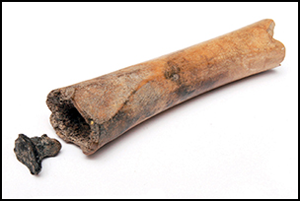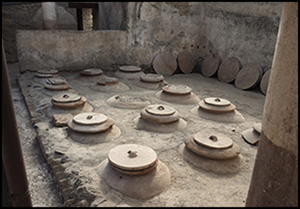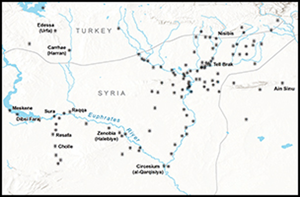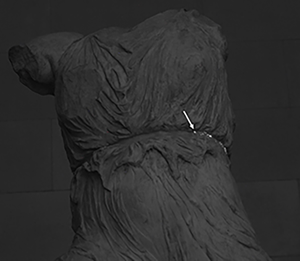Refine listing
Actions for selected content:
41 results in Research Highlights
An urban image in an urbanized landscape: measuring the visual impact of Tibur's amphitheater
-
- Journal:
- Journal of Roman Archaeology / Volume 37 / Issue 1 / June 2024
- Published online by Cambridge University Press:
- 22 March 2024, pp. 53-88
- Print publication:
- June 2024
-
- Article
-
- You have access
- Open access
- HTML
- Export citation
TOLKIEN'S UNIQUE RECEPTION OF PYTHAGOREAN ‘DISSONANCE’ IN THE AINULINDALË OF THE SILMARILLION
-
- Journal:
- Greece & Rome / Volume 71 / Issue 1 / April 2024
- Published online by Cambridge University Press:
- 06 March 2024, pp. 1-21
- Print publication:
- April 2024
-
- Article
-
- You have access
- Open access
- HTML
- Export citation
Vocabulary acquisition in the language classroom: what it is, how it works, which strategies and approaches are suitable for Latin instruction
-
- Journal:
- Journal of Classics Teaching / Volume 25 / Issue 50 / Autumn 2024
- Published online by Cambridge University Press:
- 05 March 2024, pp. 116-122
-
- Article
-
- You have access
- Open access
- HTML
- Export citation
Evidence of the intentional use of black henbane (Hyoscyamus niger) in the Roman Netherlands
-
- Article
-
- You have access
- Open access
- HTML
- Export citation
ATELLANA ACTORS AND PLAYWRIGHTS IN THE EPIGRAPHIC EVIDENCE
-
- Journal:
- The Classical Quarterly / Volume 73 / Issue 2 / December 2023
- Published online by Cambridge University Press:
- 20 March 2024, pp. 758-776
- Print publication:
- December 2023
-
- Article
-
- You have access
- Open access
- HTML
- Export citation
Comparative advantage, specialized viticulture, and the economic development of Gallia Narbonensis
-
- Journal:
- Journal of Roman Archaeology / Volume 36 / Issue 2 / December 2023
- Published online by Cambridge University Press:
- 09 January 2024, pp. 261-299
- Print publication:
- December 2023
-
- Article
-
- You have access
- Open access
- HTML
- Export citation
The transformation of Mithraea in the Late Roman period
-
- Journal:
- Journal of Roman Archaeology / Volume 36 / Issue 2 / December 2023
- Published online by Cambridge University Press:
- 24 November 2023, pp. 454-476
- Print publication:
- December 2023
-
- Article
-
- You have access
- Open access
- HTML
- Export citation
6 Shipwreck archaeology in the past 10 years
-
- Journal:
- Archaeological Reports / Volume 69 / November 2023
- Published online by Cambridge University Press:
- 08 December 2023, pp. 131-145
- Print publication:
- November 2023
-
- Article
-
- You have access
- Open access
- HTML
- Export citation
7 Recent research on climate, environment, and society in the ancient Greek world
-
- Journal:
- Archaeological Reports / Volume 69 / November 2023
- Published online by Cambridge University Press:
- 08 December 2023, pp. 147-166
- Print publication:
- November 2023
-
- Article
-
- You have access
- Open access
- HTML
- Export citation
A wall or a road? A remote sensing-based investigation of fortifications on Rome's eastern frontier
- Part of
-
- Article
-
- You have access
- Open access
- HTML
- Export citation
The goddess’ new clothes: the carving and polychromy of the Parthenon Sculptures
- Part of
-
- Article
-
- You have access
- Open access
- HTML
- Export citation
Aristophanes’ Frogs and reading culture in Athens
-
- Journal:
- The Journal of Hellenic Studies / Volume 143 / November 2023
- Published online by Cambridge University Press:
- 27 September 2023, pp. 147-166
- Print publication:
- November 2023
-
- Article
-
- You have access
- Open access
- HTML
- Export citation
New Perspectives on Child and Infant Burial in Britain (100 b.c.e.–c.e. 200)
-
- Article
-
- You have access
- Open access
- HTML
- Export citation
WHY CAN'T TELEMACHUS BE KING? THE GROWTH OF A YOUNG BASILEUS
-
- Journal:
- Greece & Rome / Volume 70 / Issue 2 / October 2023
- Published online by Cambridge University Press:
- 12 September 2023, pp. 289-308
- Print publication:
- October 2023
-
- Article
-
- You have access
- Open access
- HTML
- Export citation
Cova Dones: a major Palaeolithic cave art site in eastern Iberia
-
- Article
-
- You have access
- Open access
- HTML
- Export citation
A Scato-sexual Message: The Secundinus Stone with Phallus from Vindolanda
-
- Article
-
- You have access
- Open access
- HTML
- Export citation
THE ELEATIC STRANGER'S METHOD IN ARISTOTLE'S ETHICS
-
- Journal:
- The Cambridge Classical Journal / Volume 69 / December 2023
- Published online by Cambridge University Press:
- 05 September 2023, pp. 22-43
- Print publication:
- December 2023
-
- Article
-
- You have access
- Open access
- HTML
- Export citation
Spartans in the ancient Greek novels
-
- Journal:
- The Journal of Hellenic Studies / Volume 143 / November 2023
- Published online by Cambridge University Press:
- 04 September 2023, pp. 121-146
- Print publication:
- November 2023
-
- Article
-
- You have access
- Open access
- HTML
- Export citation
Trade, literacy and documentary histories of the northern Black Sea
-
- Journal:
- The Journal of Hellenic Studies / Volume 143 / November 2023
- Published online by Cambridge University Press:
- 09 August 2023, pp. 1-23
- Print publication:
- November 2023
-
- Article
-
- You have access
- Open access
- HTML
- Export citation





